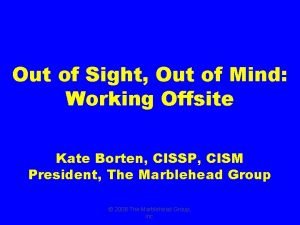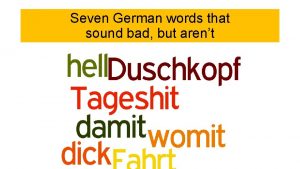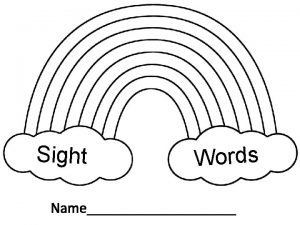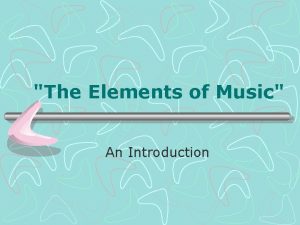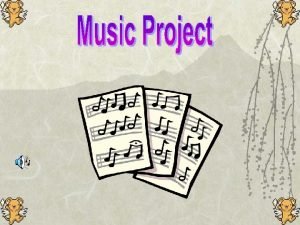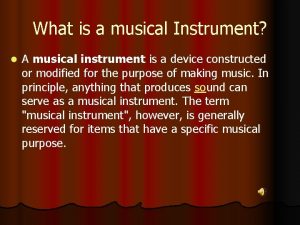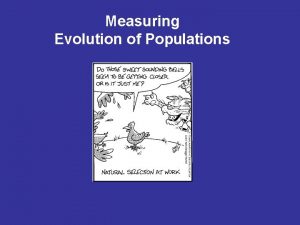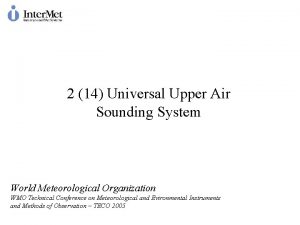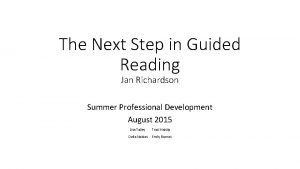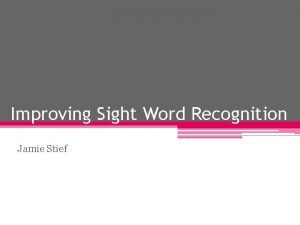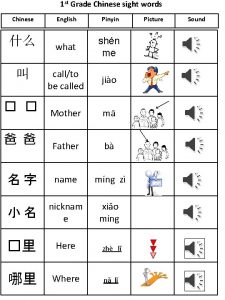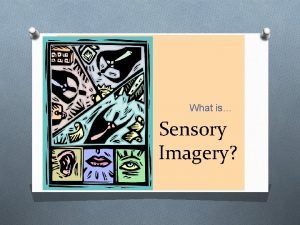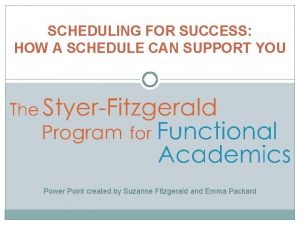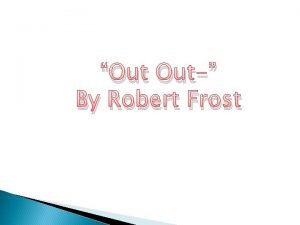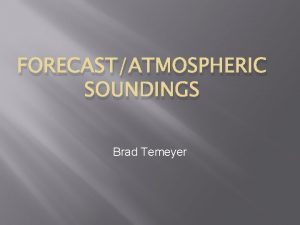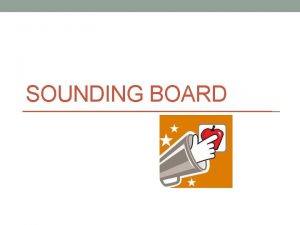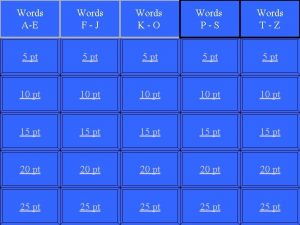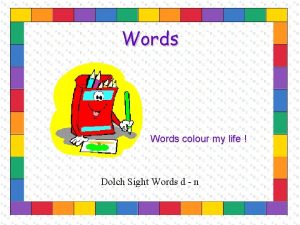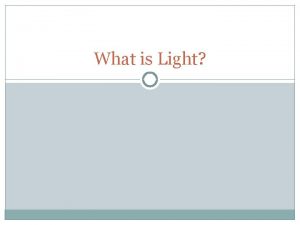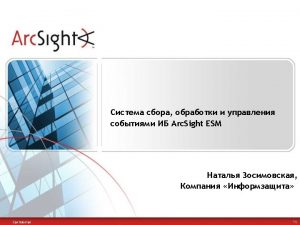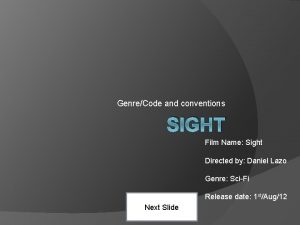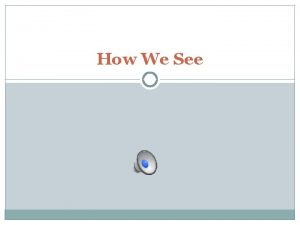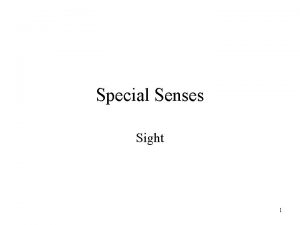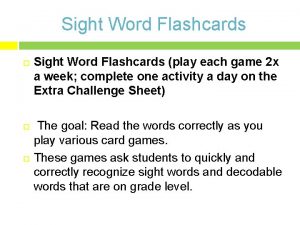From Sounding Out to Sight Words the research








































- Slides: 40

From Sounding Out to Sight Words: the research base supporting the teaching of synthetic phonics Jennifer Buckingham Director of Strategy and Senior Research Fellow, Multi. Lit Founder, Five from Five Sharing Best Practice conference, Marsden Road Public School, 30 September 2019

What is Multi. Lit? • Multi. Lit started as a research initiative of Macquarie University. • Conducts research on reading development and reading instruction through the Multi. Lit Research Unit. • Produces comprehensive reading programs for whole-class instruction and for small group and individual intervention. • Programs are based on scientific evidence and are intensively trialled and evaluated. • Multi. Lit has reading clinics that provide assessment and instructional interventions for struggling readers.

Multi. Lit reading programs Multi. Lit provides a suite of reading programs for instruction and intervention • Pre. Lit: preschool literacy program • Initia. Lit: whole-class instruction for Foundation to Year 2 • Mini. Lit: small-group program for struggling readers in Year 1 • Macq. Lit: small-group program for struggling readers in Year 3+ • Reading Tutor Program: one-to-one program for struggling readers in Year 3+

What is Five from Five? • Five from Five is an initiative to bridge the gap between classroom practice and the research on effective reading instruction. • The Five from Five website presents information on research about reading development and evidence-based reading instruction and intervention. • Five from Five advocates for evidence-based reading instruction through publications, presentations, traditional and social media, and engagement with politicians, policy makers, and peak bodies. • Five from Five began as an initiative of The Centre for Independent Studies and is now supported by Multi. Lit.

What is evidence-based reading instruction?

Teaching reading is a job for experts

How children learn to read Major evidence-based models and concepts in reading acquisition, and how they relate to each other: • Five essential elements of early reading instruction • The Simple View of Reading • The reading brain: Why phonics works • The difference between beginning and skilled readers: The Dual Route Cascading model • Orthographic mapping • Self-teaching How these underpin the synthetic phonics approach

Evidence-based teaching: the five keys to reading Phonemic awareness Phonics Fluency Vocabulary Comprehension

The Simple View of Reading There is a large amount of consistent evidence that reading comprehension is almost entirely dependent on word recognition and language comprehension. Reading Comprehension = Word Identification x Language Comprehension “The Simple View of Reading continues to withstand rigorous empirical evaluation, providing a strong explanation of what reading is at its broadest level” Hoover & Tunmer 2018

The Simple View of Reading has two essential cognitive requirements — word recognition processes and comprehension. (Gough & Tunmer, 1986) Reading comprehension will be impaired for anyone who has difficulty recognising the words of the text or understanding the language being read, or both. poor reading good reading poor reading (Hoover & Tunmer, 2018) The relative contributions of language comprehension and word recognition to reading comprehension changes across grades, with word recognition having a stronger relation to reading comprehension for younger than for older children. (Lonigan et al. , 2018)

Evidence for the Simple View of Reading Dozens of scientific studies support the SVo. R, including • In a study of over 400, 000 students from Year 1 to 3, it was found that among students whose decoding and vocabulary were developing normally, less than 1% displayed reading comprehension problems (Spencer, Quinn, & Wagner, 2014) • Listening comprehension and word decoding, together with their interaction, explained 96% of the variation in early reading comprehension skills (Lervag, Hulme, & Melby-Lervag, 2017) • Listening comprehension and word recognition provided a good estimation of Grade 3 reading comprehension, explaining around 94% of the variance (Language and Reading Research Consortium, 2018)

The role of phonics in learning to read “There is clear consensus and abundant evidence that in alphabetic languages, phonological decoding is at the core of learning to read words” Professor Kate Nation, Read. Oxford

Print is a code for speech cat cow cup cap cot cut cat cow Beginning readers access the meaning of words via their sound Skilled readers access meaning more directly after multiple exposures to a word

The reading brain • Written language is a new skill as far as the evolution of the brain is concerned. It is not naturally acquired like spoken language. • There is no single ‘reading’ area of the brain. Making sense of the printed word requires making connections between regions of the brain that were originally devoted to other processes. • Whole language teaching assumes that learning to read involves switching on a reading centre in the brain. It’s not that simple. A complex set of neuronal circuitry needs to be deliberately created.

Children are not born with a natural affinity for reading Byrne’s series of experiments on the development of the alphabetic principle among preschool age children. • Children who knew no letter names were taught pairs of written words, such as fat and bat • When the children were later shown the written word fun and asked if the word was fun or bun, almost none achieved this transfer task • Children showed no evidence of inducing the alphabetic principle in this way • Children did achieve transfer when they had been taught phoneme segmentation and letter-sound correspondences • They were then able to generalise to other words

Dual Route Cascading (DRC) model • a well researched model of word reading • explains both skilled and novice reading • shows how skilled readers differ from novice readers Coltheart, M. , Rastle, K. , Perry, C. , Langdon, R. & Ziegler, J. (2001). DRC: A Dual Route Cascaded model of visual word recognition and reading aloud. Psychological Review, 108, 204 -256.

Beginning readers are different to skilled readers

The DRC model and the Simple View of Reading Beginning readers Learning to decode & build a sight word lexicon Reading Comprehension Word identification Older readers Good decoders with substantial sight word lexicon Language comprehension Reading Comprehension Word identification Language comprehension Based on Hoover, W. A. & Tunmer , W. E. (2018)

Simple but complex From Tilstra, Mc. Master, Van den Broek, Kendeou, & Rapp (2009)

Getting from the phonological to the lexical route: Orthographic mapping • When we have seen and read a word many times, it is stored in long term memory as a unique letter string and can be read almost instantly. This process is referred to as orthographic mapping. • It is not the same as learning words as ‘sight words’, where words are memorised as logographs (word shapes) without reference to the grapheme-phoneme properties of the word.

• Through the mapping process, students are developing their knowledge of common letter combinations, as well as ‘legal’ and ‘illegal’ English spellings. For example, English words generally do not end in the letter j – this phoneme is usually represented with –ge or -dge • Orthographic mapping facilitates vocabulary development. A number of studies have shown that children are more likely to remember a new word if they know how it is spelled. See: Rosenthal, J. , & Ehri, L. C. (2008). The mnemonic value of orthography for vocabulary learning. Journal of Educational Psychology, 100, 175– 191. Ricketts, J. , Bishop, D. V. M. , & Nation, K. (2009). Orthographic facilitation in oral vocabulary acquisition, Quarterly Journal of Experimental Psychology, 62, 1948 -1966. Ehri, L. (2013). Orthographic mapping in the acquisition of sight word reading, spelling memory, and vocabulary learning, Scientific Studies of Reading, 18, 5 -21.

“Our visual system progressively extracts graphemes, syllables, prefixes, suffixes, and word roots. Two major parallel processing routes eventually come into play: the phonological route, which converts letters into speech sounds, and the lexical route, which gives access to a mental dictionary of word meanings. ” – Stanislas Dehaene

The self-teaching hypothesis • Once learners have established their knowledge of graphemephoneme correspondences and segmenting and blending, they begin to apply this knowledge to new and novel words. • Proficient decoders can do this because the reader is able to pay attention to the order and identity of letters and how they map onto the spoken form of the word. • Each time a reader is exposed to a new word when reading they are able to use their knowledge of phonics to work out how to say the word and add it to their orthographic memory.

• At first this is a slow process, however each successful decoding of a new word gives the reader exposure to orthographic patterns and information that are the foundations of skilled word recognition. • The self-teaching hypothesis enables independent reading of increasingly more complex texts and allows readers to expand their knowledge of vocabulary through reading. See: Share, D. L. (1995). Phonological recoding and self-teaching: sine qua non of reading acquisition. Cognition, 55, 151 -218. Cunningham, A. E. , Perry, K. E. , Stanovich, K. E. & Share, D. (2002). Orthographic learning during reading: examining the role of self-teaching, Journal of Experimental Child Psychology, 82, 185 -199 Tucker, R. , Castles, A. , Laroche, A. , & Deacon, H. (2016). The nature of orthographic learning in self-teaching: Testing the extent of transfer. Journal of Experimental Child Psychology, 145, 79 -94

What is synthetic phonics? • Synthetic means building words from the smallest sub-word units – graphemes and phonemes. • Grapheme-phoneme correspondences are taught in a carefully developed sequence from simple to complex • Blending and segmenting is introduced as soon as a few GPCs are learned • The simple code can be taught in a few months and the extended code in two to three years

Research on synthetic phonics • US National Reading Panel (2000) and Australian National Inquiry into Teaching Literacy (2005) did not mention synthetic phonics specifically, but concluded that systematic and explicit phonics instruction was superior. At that time, synthetic phonics not a widely used term but synthetic phonics mostly closely meets the criteria defined in these reports for effective teaching. • UK Rose Report specifically recommended synthetic phonics as the most effective approach. • The Clackmannanshire study (Scotland) directly compared synthetic and analytic phonics and found significantly higher reading outcomes for synthetic phonics up to six years later (Johnston, Mc. Geown & Watson, 2012)

• A study analysing student performance in the first five years after the English government mandated synthetic phonics found significant improvement in reading among 5 - and 7 -year-old children across the board, with the most improvement for children from disadvantaged non-English speaking backgrounds at age 11. (Machin, Mc. Nally and Viarengo, 2018). • An Australian study found significant advantages for systematic synthetic phonics over analytic phonics in reading and spelling for students in their second year of school (Christensen and Bowey, 2005) • Studies of high-performing primary schools in England in Australia, have found that these schools were using synthetic phonics as part of their early literacy programs (Louden, 2015; OFSTED, 2010, Joseph, 2019).

Synthetic phonics is strongly aligned to the scientific evidence of how children learn to read o Synthetic phonics builds the necessary neurological connections between the visual (grapheme) and phonological (phoneme) characteristics of words. o It thereby develops the phonological route of the Dual Route Cascading model – the initial and essential cognitive process for beginning readers o It establishes these connections quickly and firmly, moving this information to long term memory and minimising cognitive load o The pace can be adjusted to the learning needs of individual children o Learning to decode ‘through the word’ facilitates orthographic mapping, leading to skilled and proficient reading. o Blending and segmenting of GPCs is introduced early to allow cumulative introduction of new GPCs, allowing the decoding of new words and facilitating self-teaching. o Successful self-teaching using phonic knowledge accelerates the acquisition of ‘sight words’ and development of the lexical route of the DRC model – leading to fluent and proficient reading.

What is evidence-based reading intervention?

Effective intervention: a non-categorical approach • Based on the same theoretical and evidence base as effective instruction for all children. • The variation is in focus, intensity and duration. • Instruction is not be tailored to the perceived needs of categories of students but rather to the specific instructional needs of the individual child. • Driven by the solution rather than cause. • ‘Response to Intervention’ has become the alternative to the ‘wait to fail’, or reading discrepancy method, of identifying children struggling to learn to read. • Frequent use of valid and fit-for-purpose assessment

Response to Intervention model All children need exemplary Tier 1 instruction and this is likely to be sufficient for about 80% of the age cohort to learn to read well. Around 20% of children are likely to fall behind and will need Tier 2 small group instruction to allow them to keep up with whole class lessons. About 5% of the age cohort will need even more support than this, in the form of intensive individualised instruction Tier 3. The appropriate tier of instruction is determined by continual monitoring of student performance and progress

Mini. Lit Learning Impact Fund Evaluation • In 2017, Multi. Lit collaborated with Evidence for Learning and the New South Wales Department of Education to undertake a trial of the Mini. Lit intervention program. Multi. Lit provided training, resources and limited coaching to schools implementing the program. • The trial was evaluated by an independent team of researchers from the Royal Children’s Hospital Melbourne, the Murdoch Children’s Research Institute and the University of Melbourne. • Reading outcomes for children who attended Mini. Lit were compared to children who had not attended Mini. Lit at two time points: at the end of the intervention period (six months after the trial started) and six months after the intervention ended (12 months after the trial started). • The report of the evaluation was released in August 2019.


Obstacles to improvement

Initial Teacher Education 116 core literacy units in 66 undergraduate degrees in 38 universities. Course outlines: • Only 4% of the literacy units had a specific focus on early reading instruction or early literacy; that is, how to teach beginning readers in the first few years of school. • In 70% of literacy units, none of the five essential elements of effective evidence-based reading instruction were mentioned in the unit outlines. All five essential elements were referred to in only 6% of literacy unit outlines. • None of the unit outlines contained references to the Simple View of Reading. The specific model or theory mentioned most frequently in the unit outlines was the Four Resources / Four Roles of a Reader model, with eight mentions. The sociocultural model or view of reading was referred to nine times.

Initial Teacher Education 116 core literacy units in 66 undergraduate degrees in 38 universities. Lecturer/course coordinator qualifications and expertise • 15% of the lecturers and unit coordinators that could be identified had specific expertise in early reading instruction or literacy, most with a particular interest in early literacy development among Indigenous and other children from non-English speaking backgrounds. • 55% had research interests and expertise in other aspects of literacy, most often digital and multi-modal literacies. • 30% of the literacy lecturers or unit coordinators had research interests and expertise in areas other than literacy, such as maths or music.

Initial Teacher Education 116 core literacy units in 66 undergraduate degrees in 38 universities. Six most commonly prescribed text books: • None contained sufficiently accurate and detailed content that would allow graduate teachers to use effective, evidence-based instruction, and many contained information that was inadequate and/or misleading. • Most of the textbooks with phonics content explicitly endorse the ‘three-cueing system’, and all textbooks promote it implicitly. • Two of the six books referred to the Simple View of Reading but devoted less than a page to it. All endorsed the Four Resources Model. • Only one book referred to dyslexia at all, and the content is brief.

Seely Flint, A. , Kitson, L. , Lowe, K. , & Shaw, K. (2014). Literacy in Australia: Pedagogies for engagement. Milton, Australia: Wiley. (p. 232) “Use onset and reading ahead to gather more information. It is not uncommon for children to say ‘I read ahead and thought it was pony but when I took another look, I noticed it started with “s” – it must be stallion’. ” “Sound out a word by elongating its sounds. This is a familiar but often ineffective strategy, known as ‘sounding out’. This strategy encourages readers to stretch out the sounds from left to right, noticing all the sounds in the word. As a strategy it is not all that predictable because of the large variation in the way letters and words are sounded. Using the first letter and gaining meaning from the sentence is a much more predictable strategy. ”

Where to from here? • The research and teaching community knows a lot about how children learn to read and how best to teach them. • Schools are often working in advance of, and leading, governments and universities. • Progress is toward implementation is slow but real – both in schools and in policy. • Progress is patchy in Australia: Federation is a blessing and a curse. • Subject professional associations and teacher unions largely remain resistant to the scientific research evidence on reading instruction. • Independent universities and academic freedom are important but present a barrier to improvement.

five from five Free information and resources for evidence-based reading instruction www. fivefromfive. org. au @fivefromfive Multi. Lit Comprehensive whole class and intervention reading programs based on 20+ years of scientific and applied research and development www. multilit. com @Multi. Litmedia Find me on twitter: @buckingham_j
 Out of sight out of mind quotes
Out of sight out of mind quotes Lily gulledge
Lily gulledge Makna out of sight out of mind
Makna out of sight out of mind Bad sounding words
Bad sounding words Rainbow words sight words
Rainbow words sight words Elements of theater
Elements of theater The most expressive woodwind instrument.
The most expressive woodwind instrument. Http://weather.uwyo.edu/upperair/sounding.html
Http://weather.uwyo.edu/upperair/sounding.html Http://weather.uwyo.edu/upperair/sounding.html
Http://weather.uwyo.edu/upperair/sounding.html The sounding cataract haunted me
The sounding cataract haunted me Highest sounding double reed instrument
Highest sounding double reed instrument Sounding
Sounding Inverted v sounding
Inverted v sounding Concave brass plate instrument
Concave brass plate instrument 5 agents of evolutionary change
5 agents of evolutionary change Sleet sounding
Sleet sounding Upper air sounding
Upper air sounding Golden harps are sounding
Golden harps are sounding Figurative language in one thing by one direction
Figurative language in one thing by one direction Black eyed susan 2016
Black eyed susan 2016 The next step in guided reading
The next step in guided reading Sight word processing problem
Sight word processing problem Sight words in english
Sight words in english Sight imagery examples
Sight imagery examples Styer-fitzgerald
Styer-fitzgerald Put out the light, and then put out the light
Put out the light, and then put out the light Out, out— robert frost
Out, out— robert frost Out out poem title meaning
Out out poem title meaning Lock out tag out safety talk
Lock out tag out safety talk Out out frost
Out out frost Matthew 11 28-30 message
Matthew 11 28-30 message Lock ouy
Lock ouy Out, damned spot! out, i say!
Out, damned spot! out, i say! Henri fayol was a social scientist
Henri fayol was a social scientist Bgsu quality systems
Bgsu quality systems Hình ảnh bộ gõ cơ thể búng tay
Hình ảnh bộ gõ cơ thể búng tay Frameset trong html5
Frameset trong html5 Bổ thể
Bổ thể Tỉ lệ cơ thể trẻ em
Tỉ lệ cơ thể trẻ em Chó sói
Chó sói Chụp tư thế worms-breton
Chụp tư thế worms-breton


